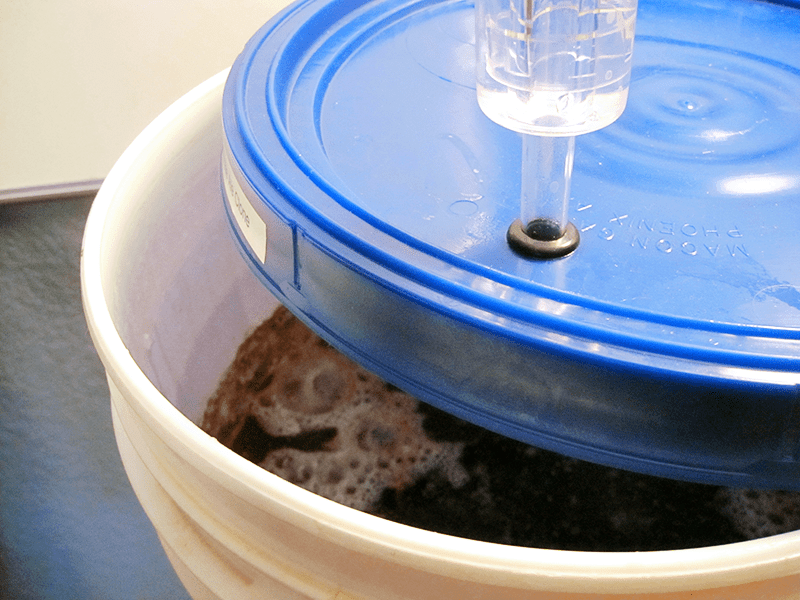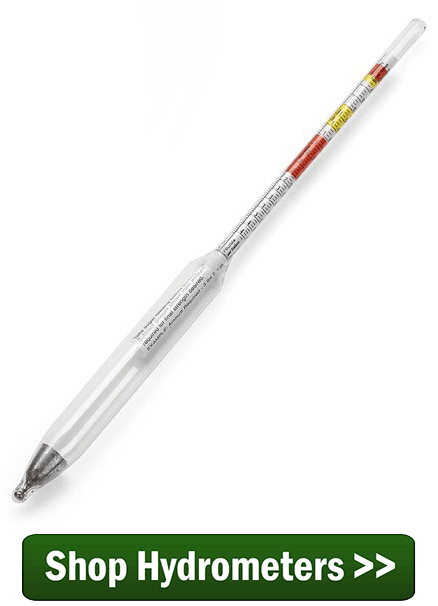 I am making two recipes of Peach wine now and want to know why they call for feeding sugar during the fermentation instead of adding it all at once? Adding the initial amount I get a reading of 1.055. What is the reason for adding of the sugar this way?…
I am making two recipes of Peach wine now and want to know why they call for feeding sugar during the fermentation instead of adding it all at once? Adding the initial amount I get a reading of 1.055. What is the reason for adding of the sugar this way?…
Mark M. – GA
—–
Hello Mark,
It is the thinking of some home winemakers that by feeding sugar during the fermentation you are making it easier for the wine yeast to ferment. If you add the sugar incrementally, you are less likely to have a stuck fermentation.
The reason for this is because you are not ever letting the sugar concentration of the wine must get too high with this method: you put some sugar in the wine must; the yeast ferments it into alcohol; and then you add some more.
There is some valid reasoning behind this, but it sounds like the wine recipe you are looking at is taking it a little too far.
Too much sugar in any liquid can act as a preservative. As the sugar concentration goes higher, yeast, bacteria, molds, all have a more difficult time fermenting. The is why sugar syrups do not spoil at all. The sugar concentration is so extreme that nothing can touch it.
This is true for a wine must, as well. Sugar acts as a preservative on the wine must. As the sugar concentration goes up in a wine must, it becomes increasingly difficult for the wine yeast to ferment. However, if you are targeting an alcohol level of 14% or lower, you should not have any issues in this regard. The yeast can easily ferment the amount of sugar required to make 14% or less all at once. In these situations feeding the sugar to the fermentation is nothing but needless, extra work. You can go ahead and put all the sugar in at the same time.
The winemakers that like feeding sugar during the fermentation are typically the winemakers who are trying to drive the alcohol up as much as they can in their homemade wine. The process of feeding sugar during the fermentation becomes necessary if you are trying to produce all the alcohol you can with the wine yeast.
The winemaker would start out by adding enough sugar to ferment 13% – 14% alcohol. As the fermentation began to run out of sugar and slow down, they would then add a little more to extend the fermentation. They would continue to add sugar in increasingly smaller amounts until the wine yeast couldn’t ferment anymore.
In this situation you are fighting two elements: the preservative effects of sugar and the preservative effects of alcohol. Just like when the sugar levels go up, the yeast have a harder time fermenting, the wine yeast have a harder time fermenting when the alcohol level goes up. This means that later in the fermentation things keep getting tougher and tougher to accomplish. The increased alcohol starts to preserve the wine, making the fermentation all that more sensitive to the sugar concentration levels.
I for one do not recommend driving the alcohol up with sugar for the simple reason that the wine will taste watery and out of balance. This is because of the numbing effects of alcohol on the tongue. We can no longer taste the fruit of the wine, only the hot of the alcohol.
Mark, if I were in your shoes, I would forget about feeding sugar during the fermentation regardless of what the wine recipe directions say. Instead, I would simply use my hydrometer to determine how much sugar to add to end up with a wine that’s 12% or 13%. Just keep adding sugar until the potential alcohol scale on the hydrometer reads somewhere in this area.
Happy Winemaking,
Ed Kraus
—–
Ed Kraus is a 3rd generation home brewer/winemaker and has been an owner of E. C. Kraus since 1999. He has been helping individuals make better wine and beer for over 25 years.

So to the alc. To 20% how much sugar should I use for 5 gallons red wine
Geraldine, unfortunately, we have no way to tell you how much sugar to add to reach 20% potential alcohol because we do not know how much natural sugar is already present in the juice. You can use your hydrometer to control the potential alcohol content of the juice. The general rule of thumb is that one pound of sugar will raise the potential alcohol in a 5-gallon batch be about one percent. I would also caution you that reaching 20 percent alcohol is something that is not practical to achieve. I would take a look at the article posted below on making high alcohol wines.
Making High alcohol Wines
http://www.eckraus.com/wine-making-high-alcohol
I tried adding sugar to a fermentation once, and it erupted like a volcano.
I have been reading about this subject quite a bit, It was stated above that one lb of sugar raise 1% alc.My question is what procedure you use to add the sugar, by the spoonful, melt the sugar in hot water, make a batch and add it every few days. Can you expand on this.Thank You for the articles.
Frank, when adding sugar to a wine must, it is very helpful to pre-dissolve the sugar in hot water first. By doing this you can be sure the sugar is dissolved. This also makes it much easier to mix the sugar evenly throughout the must. You will want to let it cool before adding to the must. Unless you plan to add more sugar than the recipe calls for, you can add all of it in the beginning. You just want to make sure he start specific gravity reading is no higher than 1.110 to start the fermentation. If you are trying to make a higher alcohol wine then you will want to add any additional sugar later in the process.
I personally don’t know why you want wine with alcohol so high that it has no taste or body. I have found that 11% alcohol has much better flavors and body than 14% alcohol. If you just want the alcohol there is a recipe for 23% sugar wines with a special yeast that takes lots of yeast nutrient and 17lbs sugar.
i added 100% grape juice to my carboy to top it off and it just started up again now im dealing with alot of foam